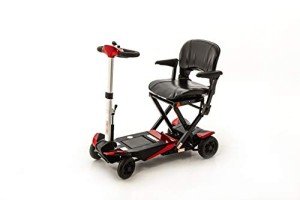How Mobility Devices Influenced My Life For The Better

Understanding Mobility Devices: Enhancing Independence and Quality of Life
In today's busy world, the desire for mobility is universal. Nevertheless, particular medical conditions or age-related challenges can hinder movement, leading to a continuous search for assistance. Mobility devices function as vital tools to enhance independence, enhance quality of life, and enable individuals to engage totally in their neighborhoods. This short article supplies a comprehensive overview of mobility devices, including their types, functions, choice criteria, and more.
Kinds Of Mobility Devices
Mobility devices vary from easy aids to complex devices, tailored to satisfy various needs. Below is a table summarizing typical types of mobility devices:
| Type of Device | Description | Ideal For |
|---|---|---|
| Walkers | Four-legged support devices that provide exceptional stability while strolling. | People requiring additional support. |
| Canes | Single or three-legged sticks that improve balance and support walking. | Those with slight mobility difficulties. |
| Wheelchairs | Seats installed on wheels, readily available in handbook and electric versions. | Individuals with restricted or no mobility. |
| Scooters | Electric lorries created for outdoor use and ease of navigation. | Those who can't walk long distances. |
| Crutches | Devices that assist people transfer weight away from a hurt leg. | People recovering from leg injuries. |
| Rollators | Walkers with wheels, seats, and brakes for improved mobility. | Users needing rest choices while strolling. |
| Lift Chairs | Reclining chairs that assist users in standing up and taking a seat. | Seniors or those with mobility restrictions. |
| Mobility Scooters | Small electric vehicles for limited mobility, often used outdoors. | People requiring support over cross countries. |
Key Features of Mobility Devices
When choosing a mobility device, a number of key functions must be thought about to guarantee ideal performance and ease of use:
- Weight Capacity: Understanding the gadget's weight limitation is important for security and effectiveness.
- Adjustability: Devices needs to be adjustable in height and width to fit the user comfortably.
- Mobility: Lightweight and foldable options are necessary for users who travel or need transportation.
- Stability and Safety: Look for features like anti-tip wheels and tough structures to improve security.
- Ease of Use: Simple mechanisms and easy to use styles can make a significant difference in day-to-day usage.
- Convenience: Ergonomic designs and padded seats can enhance the user experience.
Choosing the Right Mobility Device
Selecting the right mobility device can be a challenging job. Here are some steps to assist the decision-making process:
- Assess Needs: Evaluate the individual's mobility challenges and everyday activities.
- Consult a Professional: Engage healthcare professionals who can offer recommendations based on the person's physical condition.
- Trial Options: If possible, trial different devices to determine comfort and performance.
- Review Budget: Consider the cost of the device, consisting of any extra functions or modifications needed.
- Research study Options: Determine the very best brand names and designs by reading reviews and contrasts.
Table: Comparative Analysis of Popular Mobility Devices
| Gadget | Advantages | Disadvantages |
|---|---|---|
| Walkers | Outstanding stability, promotes walking. | Bulky, might restrict motion in small spaces. |
| Canes | Lightweight, enhances balance. | May not provide enough support for severe mobility problems. |
| Wheelchairs | Ideal for those with substantial mobility restrictions. | Can be cumbersome, particularly in indoor environments. |
| Scooters | Great for outdoor use, easy to maneuver. | Restricted indoor usability, heavier. |
| Rollators | Supplies rest alternative, easy to move. | May need more space than standard walkers. |
| Raise Chairs | Comfortable, helps shift from sitting to standing. | More costly, bigger footprint. |
Often Asked Questions (FAQs)
1. What is a mobility device?
A mobility device is any tool developed to assist individuals in moving and navigating their environment. This includes walkers, wheelchairs, scooters, and crutches.
2. How do I understand which mobility gadget is best for me?
Consider your particular mobility difficulties, physical capabilities, and way of life needs. Consulting with healthcare experts can also offer tailored recommendations.
3. Are mobility devices covered by insurance coverage?
Lots of insurance strategies, including Medicare, may cover particular mobility devices. It's important to examine with your insurance company for particular coverage information.
4. Can I rent a mobility gadget instead of purchasing one?
Yes, lots of medical supply stores and pharmacies provide leasings for mobility devices. This choice is helpful for people with short-lived mobility concerns.
5. How can I maintain my mobility gadget?
Regular upkeep is vital. It consists of cleaning the device, inspecting for wear and tear, and making sure all parts are working correctly.
The Impact of Mobility Devices on Quality of Life
Mobility devices substantially enhance the lifestyle for people with limited mobility. They cultivate self-reliance, encourage social interaction, and boost access to necessary services and recreational activities.
- Increased Independence: Users can browse their areas, go to occasions, and engage in pastimes without counting on others.
- Social Engagement: Mobility devices help with participation in celebrations, thereby combating feelings of seclusion.
- Boosted Safety: Devices supply stability and lower the risk of falls, promoting user self-confidence.
Mobility devices are more than just tools for motion; they are gateways to independence and quality living. By understanding the different types of mobility aids available, their key features, and considerations for picking the best device, people can make informed decisions about their mobility needs. Ultimately, folding mobility scooter with lithium battery can cause a more active, satisfying life. Whether it's a walker, wheelchair, or scooter, the best option contributes considerably to enhancing the mobility and self-reliance of users.

